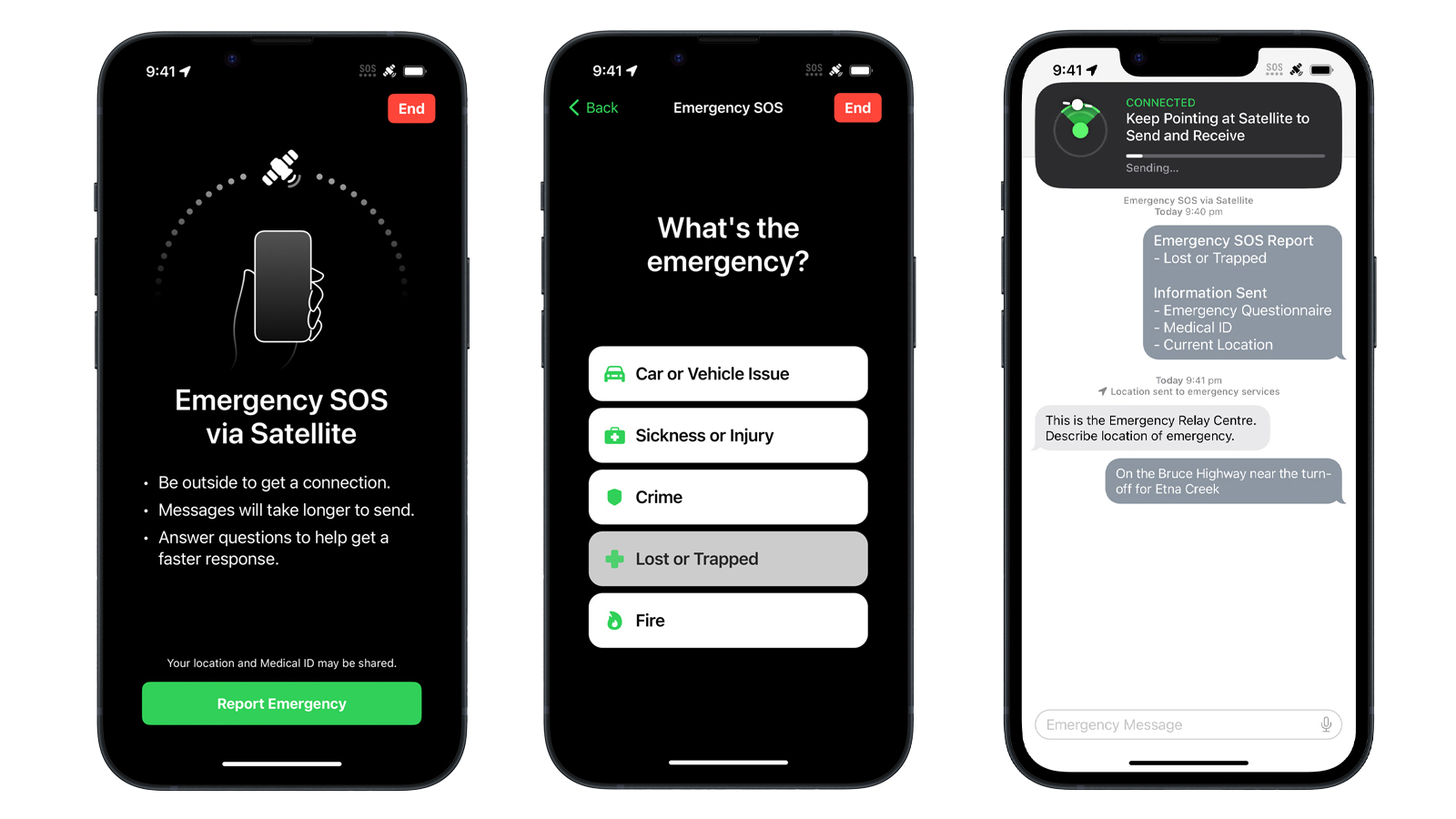iPhone 14 Emergency SOS satellite feature launches in Australia and New Zealand
The iPhone 14 exclusive has been proven to save lives in emergency situation

Apple has today (May 15) launched its Emergency SOS via satellite feature for the iPhone 14 series in Australia and New Zealand. The feature, which allows you to contact emergency services via satellite when you have no Wi-Fi or mobile connectivity, is already available in the US, UK, Canada and parts of Europe, and has already proven its usefulness.
The Emergency SOS via satellite for iPhone 14 works by relaying messages via satellites when you need help. You can’t make calls via satellite, nor send messages to any of your contacts. It is purely there to contact emergency services, with your messages and information being sent to Apple-trained emergency responders, who will then communicate with the relevant services to get them to help you.
If an iPhone 14 user has no Wi-Fi or mobile network connection and tries to contact 000 in Australia or 111 in New Zealand, a dedicated interface will appear on the iPhone 14 screen. This then presents a short questionnaire that asks questions such as your location, how much battery you have left and the nature of your emergency. The user will then need to point their iPhone 14 at the sky to form a connection with a satellite so that the message can be sent.

An on-screen image will also appear, indicating where you should point your phone to maximise the connection. Ideally you want to be in clear conditions, unobstructed by mountains, buildings or trees if possible.
Apple says that because of the custom components integrated in the iPhone 14, coupled with features of iOS 16 and a new text compression system, messages can be sent in as little as 15 seconds. If you already own an iPhone 14 and want to know what to do before you get caught up in a real-world emergency, Apple has installed a demo version of the feature on its latest phone for users to test out.
Apple has also introduced a similar satellite-based feature to the Find My app. If an iPhone 14 user loses all connectivity but doesn’t experience an emergency, they are still able to share their location with family and friends via Find My using the space-based satellites to let loved ones know they’re alright, just not contactable for a while.
Apple says Emergency SOS via satellite for iPhone 14 is available for free for two years from today (May 15) for existing iPhone 14 users, or at the time of activation of a new iPhone 14, iPhone 14 Plus, iPhone 14 Pro and iPhone 14 Pro Max. The company hasn’t indicated how much the service will cost once this two-year period has expired.
Sign up for breaking news, reviews, opinion, top tech deals, and more.
Opinion: A giant leap for human safety
Apple has said its Emergency SOS via satellite feature has already helped save the lives of 12 people in countries where it’s been available since its initial launch, which is certainly positive news.
In Australia and New Zealand, people naturally love to go and explore the vast expanse of the Outback or go hiking up mountains, where mobile connectivity is going to be next to non-existent. The inherent dangers of these explorations brings with it the need to be able to contact emergency services should anything go wrong. Now that Apple has introduced this feature, even if it isn’t needed by trepid explorers, I expect it will at least provide some much needed reassurance.
And for now, the service only lets you relay specific information and messages to an Apple-trained specialist. I would like to think that in the future, with new iPhone releases, the technology will be able to be improved so that it can allow for emergency calls too.
Of course, since it’s only available on the iPhone 14 series – due to necessary hardware – it does limit the number of people who will actually be able to take advantage of it. But, with some of the best iPhone 14 plans costing around AU$100 a month, it could prove to be a small investment in return for saving your life.
You will also of course need some charge on your iPhone 14 in order to use the service. Fortunately, the latest series of iPhones do offer at least a day of battery life from standard use. But I would imagine that if you know you’re going on a trip where access to a power outlet is unlikely, then you’ll equip yourself with one of the best power banks available.

Max is a senior staff writer for TechRadar who covers home entertainment and audio first, NBN second and virtually anything else that falls under the consumer electronics umbrella third. He's also a bit of an ecommerce fiend, particularly when it comes to finding the latest coupon codes for a variety of publications. He has written for TechRadar's sister publication What Hi-Fi? as well as Pocket-lint, and he's also the editor of Australian Hi-Fi and Audio Esoterica magazines. Max also dabbled in the men's lifestyle publication space, but is now firmly rooted in his first passion of technology.